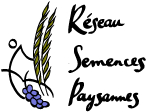Niveau juridique : Union européenne
-
Texte de la question, en date du 8-07-2019
Oilseed rape crops are at risk from the dangerous Turnip Yellows Virus (TuYV). Some two years ago, the company Limagrain launched a study on this virus in Romania, taking oilseed rape samples from all over the country.
The study showed the virus to be present in Romania at an average infestation rate of 81% on the sites tested. The virus starts to attack young plants in the autumn, causing the edges of their leaves to turn purple. It continues to attack plants at the leaf development stage in the spring, again causing purple discoloration of their leaves. This ultimately leads to the damaged leaves drying out, a loss of leaf mass and stunted seed pods with few seeds.
TuYV crop infections are very difficult to spot, but can result in a 25% loss in crop yield and a lower quality harvest.
What tools does the Commission have at its disposal to provide financial support for farmers who have experienced a significant drop in yield
-
REPONSE du 6-09-2019
Under Article 19 of Regulation (EU) No 652/2014(1), grants may be attributed to Member States under certain conditions in the case of an outbreak in order to facilitate the application of specific activities in the outbreak area.
Under rural development programmes(2) co-financed by the EU, Member States may provide support for risk management including insurance contracts, and mutual funds in case of adverse climatic events, plant diseases and pests. They may also use the income stabilisation tool to compensate for severe drops in income. In addition, if measures applied to eradicate a pest cause the destruction of agricultural production potential, rural development programmes can provide support for investments aimed at restoring such potential.
Member States may also consider granting state aid in line with the EU Guidelines for state aid in the agricultural and forestry sectors and in rural areas 2014-2020(3)or under Regulation (EU) No 702/2014(4). A third possibility is the granting of de minimis aid complying with the provisions of Regulation (EU) No 1408/2013(5). De minimis aid is not considered as state aid.
(1) Regulation (EU) No 652/2014 of the European Parliament and of the Council of 15 May 2014 laying down provisions for the management of expenditure relating to the food chain, animal health and animal welfare, and relating to plant health and plant reproductive material, amending Council Directives 98/56/EC, 2000/29/EC and 2008/90/EC, Regulations (EC) No 178/2002, (EC) No 882/2004 and (EC) No 396/2005 of the European Parliament and of the Council, Directive 2009/128/EC of the European Parliament and of the Council and Regulation (EC) No 1107/2009 of the European Parliament and of the Council and repealing Council Decisions 66/399/EEC, 76/894/EEC and 2009/470/EC.
(2) eur-lex.europa.eu/legal-content/EN/TXT/PDF/?uri=CELEX:02013R1305-20140101&rid=1
(3) OJ C 204, 1.7.2014, p. 1. Amended by the Notices published in OJ C 390, 24.11.2015, p. 4; OJ C 139, 20.4.2018, p. 3 and OJ C 403, 9.11.2018, p. 10, and by the Corrigendum published in OJ C 265, 21.7.2016, p. 5.
(4) Commission Regulation (EU) No 702/2014 of 25 June 2014 declaring certain categories of aid in the agricultural and forestry sectors and in rural areas compatible with the internal market in application of Articles 107 and 108 of the Treaty on the Functioning of the European Union, OJ L 193, 1.7.2014, p. 1.
(5) Commission Regulation (EU) No 1408/2013 of 18 December 2013 on the application of Articles 107 and 108 of the Treaty on the Functioning of the European Union to de minimis aid in the agriculture sector, OJ L 352, 24.12.2013, p. 9; amended on 21 February 2019, OJ L I51, 22.2.2019, p. 1.
Une des meilleures solutions pour lutter contre ce virus serait de semer une variété tolérante au virus de la jaunisse. Il est intéressant de noter que le député cite une étude réalisée par Limagrain pour appuyer sa question.
